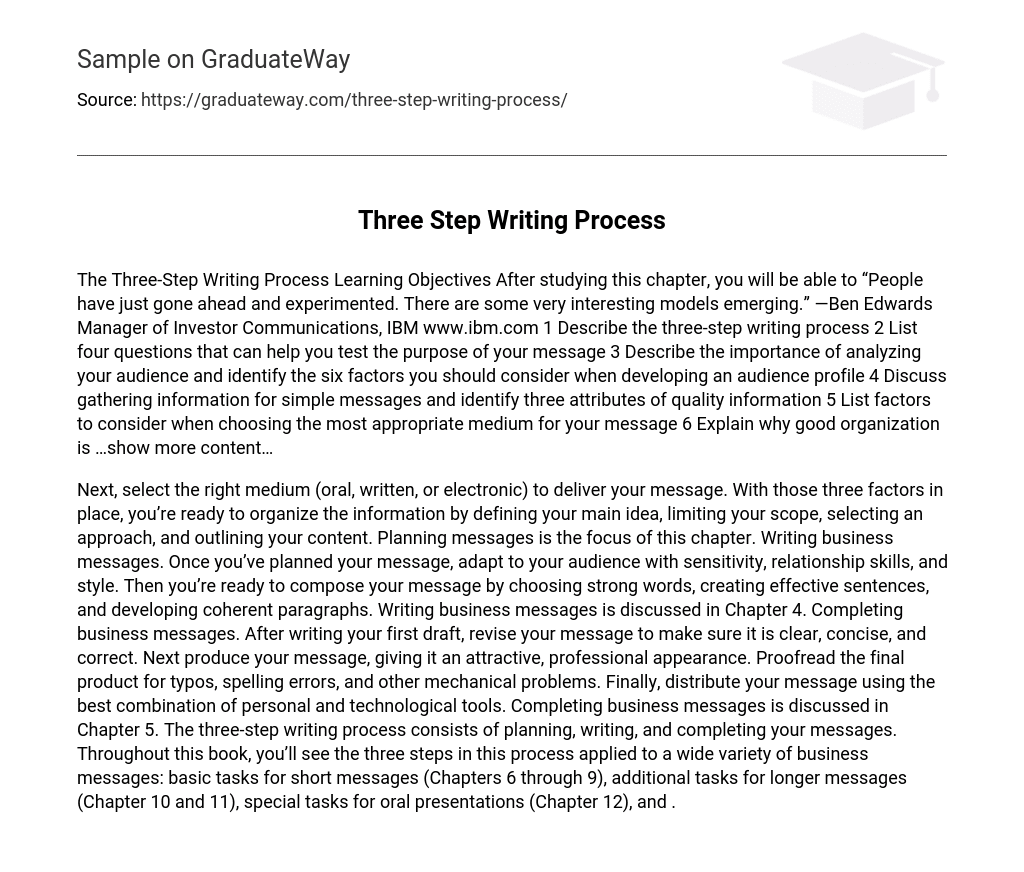The Three-Step Writing Process Learning Objectives After studying this chapter, you will be able to “People have just gone ahead and experimented. There are some very interesting models emerging.” —Ben Edwards Manager of Investor Communications, IBM www.ibm.com 1 Describe the three-step writing process 2 List four questions that can help you test the purpose of your message 3 Describe the importance of analyzing your audience and identify the six factors you should consider when developing an audience profile 4 Discuss gathering information for simple messages and identify three attributes of quality information 5 List factors to consider when choosing the most appropriate medium for your message 6 Explain why good organization is …show more content…
Next, select the right medium (oral, written, or electronic) to deliver your message. With those three factors in place, you’re ready to organize the information by defining your main idea, limiting your scope, selecting an approach, and outlining your content. Planning messages is the focus of this chapter. Writing business messages. Once you’ve planned your message, adapt to your audience with sensitivity, relationship skills, and style. Then you’re ready to compose your message by choosing strong words, creating effective sentences, and developing coherent paragraphs. Writing business messages is discussed in Chapter 4. Completing business messages. After writing your first draft, revise your message to make sure it is clear, concise, and correct. Next produce your message, giving it an attractive, professional appearance. Proofread the final product for typos, spelling errors, and other mechanical problems. Finally, distribute your message using the best combination of personal and technological tools. Completing business messages is discussed in Chapter 5. The three-step writing process consists of planning, writing, and completing your messages. Throughout this book, you’ll see the three steps in this process applied to a wide variety of business messages: basic tasks for short messages (Chapters 6 through 9), additional tasks for longer messages (Chapter 10 and 11), special tasks for oral presentations (Chapter 12), and .





